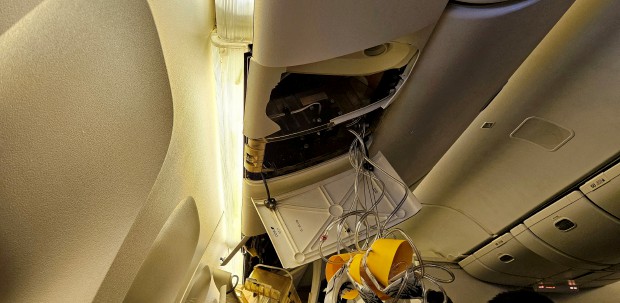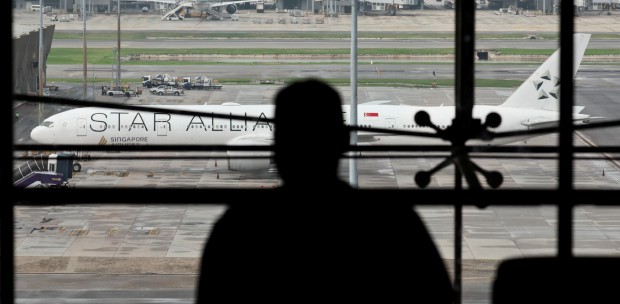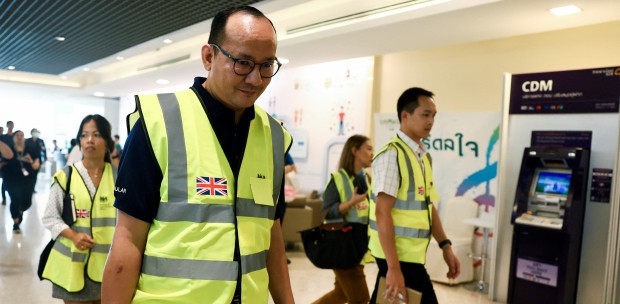Airlines are showing more interest in turbulence-prediction technology after two headline-grabbing incidents in recent weeks, but are holding back from making passengers stay in seatbelts at all times, according to global airline body IATA.
A dramatic loss of altitude on a Singapore Airlines flight last month led to dozens of injuries and the first death linked to plane turbulence in 25 years.
Days later, 12 more were injured as a Qatar Airways flight hit turbulence.
"There is no silver bullet when it comes to turbulence.
"But more information, more data will definitely improve the situation," said Nick Careen, senior vice-president, operations, safety and security, at the International Air Transport Association (Iata).
Aviation is seeing an increase in turbulence and incident reporting, but bad turbulence remains rare and the severity has not increased, Careen said at Iata's annual gathering in Dubai.
Passengers aboard Singapore Airlines Flight SQ321 said crew and those not strapped in left the floor and slammed into the cabin ceiling, cracking it in places.
The incident has put seatbelt practices in the spotlight, with airlines typically allowing passengers to undo belts during normal cruise conditions, while recommending they keep them on.
"I don't believe there is a conflict," Iata director general Willie Walsh said.
Walsh and Lufthansa CEO Carsten Spohr, both former pilots, both said they always keep seatbelts fastened when flying.
Turbulence, or pockets of disturbed air, can cause a plane to shake or suddenly drop.
It is the leading cause of in-flight injury, but usually causes no more than passenger unease.
Last year was aviation's safest by many parameters and commercial jets are built to cope with forces many times those experienced in-flight.
Nevertheless, Iata identifies turbulence as a "major safety concern" and a cost burden when pilots re-route.
The head of Emirates said he expected industry policies around turbulence and seatbelts would become more conservative following the Singapore Airlines incident.
Hong Kong-based Greater Bay Airlines said last week it was updating policy to remind passengers to fasten seatbelts at all times, as a "precautionary" but not "mandatory" measure.
Singapore Airlines said it would adopt a more cautious approach, including not serving hot drinks or meals when the seatbelt sign is on.
"I think it's clear now how important it is especially for passengers to follow the directives that they're given," RwandAir CEO Yvonne Makolo said.
Turbulence has many causes, most obviously the unstable weather patterns that trigger storms. This can be detected by weather radar.
Another type, clear air turbulence, is a sudden and severe swirl even where there are no clouds. These invisible pockets of air are hard to predict.
Turbulence prediction technologies are evolving. Iata in 2020 launched the Turbulence Aware data exchange platform to share real-time information among participating aircraft.
However, just 21 of Iata's more than 300 airlines use it.
Emirates joined last week, adding around 140 aircraft to the network.
Some research suggests turbulence could worsen with climate change.
Singapore Airlines said Flight SQ321 encountered "sudden extreme turbulence", but not the type involved.
A preliminary report by Singapore's Transport Ministry said a rapid change in gravitational force and a 54m altitude drop likely caused passengers and crew to become airborne.
Guliz Ozturk, CEO of Turkey's low-cost Pegasus Airlines, said it had reviewed cabin and pilot announcement policies and would consider investing in predictive technologies.
* The writers are from Reuters





